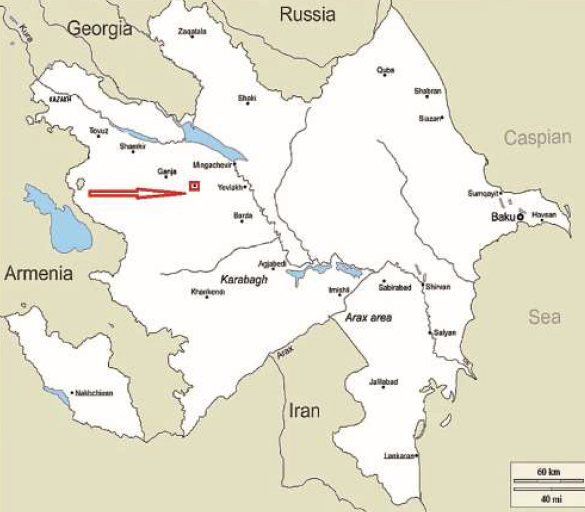MEDIEVAL LIFE IN KERPIJLITEPE – SELJUK AND AFTER THE MONGOL CONQUEST PERIODS
DOI:
https://doi.org/10.24852/2587-6112.2024.2.172.185Keywords:
archaeology, Azerbaijan, Borsunlu, Kerpijlitepe, Seljuks, castle, kiln, copper coins, Mongol conquestAbstract
The medieval monument of Kerpijlitepe is located at an altitude of 208–210m sea level, in the west of the Republic of Azerbaijan, near the village of Borsunlu of the Goranboy district, on the bank of the Gazanbulag River. The name of the site is associated with the presence of numerous shards of burnt bricks on its territory. In 2016-2018, archaeological excavations were conducted in 3 phases with short breaks in Kerpijlitepe. Archaeological studies demonstrate that in the XIII centuries there was a medieval castle on this territory. Some specialists believe that there is a “caravanserai” on this territory, a typical structure for the medieval East. During
excavations, a large part of the medieval castle was uncovered. Of the four semicircular outposts, only the front two are well preserved. During the excavations, remains of dwellings, brick kilns, rich fi nds of ceramics, metal, bone, glass and stone, copper coins, etc. were also found. In the X–XIII centuries Kerpijlitepe turned into a densely populated urban settlement and maintained ties with many craft, trade and cultural centers of Azerbaijan, and especially with cities such as Shamkir and Ganja.
References
Akhmedov, G. M. 1959. In Iessen, A. A., Kushnareva, K. Kh. (ed.). Trudy Azerbaydzhanskoy (Orenkalinskoy) EkAkhmedov, G. M. 1959. In Iessen, A. A., Kushnareva, K. Kh. (ed.). Trudy Azerbaydzhanskoy (Orenkalinskoy) Ekspeditsii (Proceedings of the Azerbaijan (Oren Kala) Archaeological Expedition) 1. Materialy i issledovaniia po arkheologii SSSR (Materials and Studies in the USSR Archaeology) 67. Moscow: “Nauka” Publ., 186–227 (in Russian).
Bolshakov, O. G. 1984. Srednevekovyy gorod Blizhnego Vostoka (VII – seredina XIII v.) (Medieval city of the Middle East (VII -XIII century) Moscow: “Nauka” Publ. (in Russian).
Dostiyev, T. M. 1989. In Sovetskaia Arkheologiia (Soviet Archaeology) (3), 193–206 (in Russian).
Dostiev, T. M. 1999. Srednevekovye arkheologicheskie pamyatniki Severo-Vostochnogo Azerbaydzhana (IX – seredina XIII veka) (Medieval Archaeological Sites of North-Eastern Azerbaijan (9th – Mid-13th Century)). Baku: Baku State University Publ. (in Russian).
Ismizade, O. Sh., Ibragimov, F. A. 1983. Khudozhestvennaya shtampovannaya keramika srednevekovogo Baku (Art stamped pottery of medieval Baku) Baku: “Elm” Publ. (in Russian).
Nadzhafova, N. N. 1964. Khudozhestvennaya keramika Azerbaydzhana XII–XV vv. (Art pottery of Azerbaijan of the XII–XV centuries) Baku: Academy of Sciences of the AzSSR (in Russian).
Novruzlu, A. I. 1993. Srednevekovaya keramika Azerbaydzhana (IX–XVII vv.) (Medieval ceramics of Azerbaijan (IX–XVII centuries) Baku: “Elm” Publ. (in Russian).
Useynov, M. A., Bretanitskiy, L. S., Salamzade, A. R. 1963. Istoriya arkhitektury Azerbaydzhana (History of architecture of Azerbaijan) Moscow: “Gosstroyizdat” Publ. (in Russian).
Bünyadov, Z. M. 2007. Az

Downloads
Published
How to Cite
Issue
Section
License
Copyright (c) 2024 Asadov Vagif A., Nadzhafov Shamil N.

This work is licensed under a Creative Commons Attribution-NonCommercial 4.0 International License.







